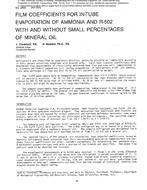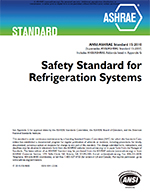Track: Fundamentals and Applications
Sponsor: 6.6 Service Water Heating Systems, 6.1 Hydronic and Steam Equipment and Systems
Chair: James D. Lutz, P.E., Member, Hot Water Research, Oakland, CA
Current developments in residential domestic hot water systems are covered. This seminar presents four issues to be considered in the design of system that impact the efficiency and safety of domestic hot water. The first speaker discusses two topics: modeling hot water draw profiles and drain water heat recovery. The third presentation discusses the system implications and limitations due to water conservation efforts. The final presentation is about balancing scald risk and legionella prevention.
1. Title 24 Draw Profiles: What They Are and How You Can Use Them
Peter Grant, Frontier Energy, Davis, CA
California has recently added detailed hot water draw profiles to the Title 24 code compliance calculator. These draw profiles are based on field study data, both monitoring how people use hot water in homes, and how many people typically live in homes of different sizes. In addition to improving the level of rigor in code compliance simulation in California, they represent an extremely valuable research tool for both simulators and experimentalists.
2. Modeling Drainwater Heat Recovery
Peter Grant, Frontier Energy, Davis, CA
California has recently added an algorithm for savings from vertical drain water heat recovery (V-DWHR) devices to the Title 24 code compliance program. Additional projects are underway to develop algorithms for horizontal and sloped DWHR devices, and they will soon be added to the compliance program as well. This presentation discusses the testing and data analysis efforts behind the algorithm development, as well as anticipated savings in the state.
3. How Low Can You Go? How Close Can You Get?
Gary Klein, Associate Member, Gary Klein and Associates, Inc., Rancho Cordova, CA
Given the number of choices in flow rates and fill volumes for plumbing fixtures and appliances and the uncertainty of occupancy schedules, how do you select equipment that works well as a system? What can you do in your projects that will give you assurance that the system will satisfy your customers’ needs and expectations as efficiently as possible, particularly for water efficient fixtures and appliances? Using existing data including results from a current research project funded by the California Energy Commission, this session discusses best practices to implement the principle of hot-water-as-a-system
4. Service Hot Water Systems: A Balancing Act between Legionella Prevention and Scald Prevention
Ronald L. George, CPD, Associate Member, Plumb-Tech Design & Consulting Services, LLC, Newport, MI
This session covers the design of domestic hot water systems and myths and common misunderstandings associated with water heaters and domestic hot water systems. Attendees learn how to design a plumbing system to simultaneously control scalding and Legionella bacteria hazards. The session also covers plumbing code and standards language related to hot water systems and discusses design, installation, maintenance, water conservation, water quality, water velocities and water temperature issues.
Presented: Wednesday, January 24, 2018, 11:00 AM-12:30 PM
Run Time: 90 min.
This is a zip file that consists of PowerPoint slides synchronized with the audio-recording of the speaker (recorded presentation), PDF files of the slides, and audio only (mp3) for each presentation.
Citation: ASHRAE Seminar Recordings, 2018 Winter Conference, Chicago, IL
Product Details
- Published:
- 2018
- Units of Measure:
- Dual
- File Size:
- 1 file , 72 MB
- Product Code(s):
- D-CH18Sem65


